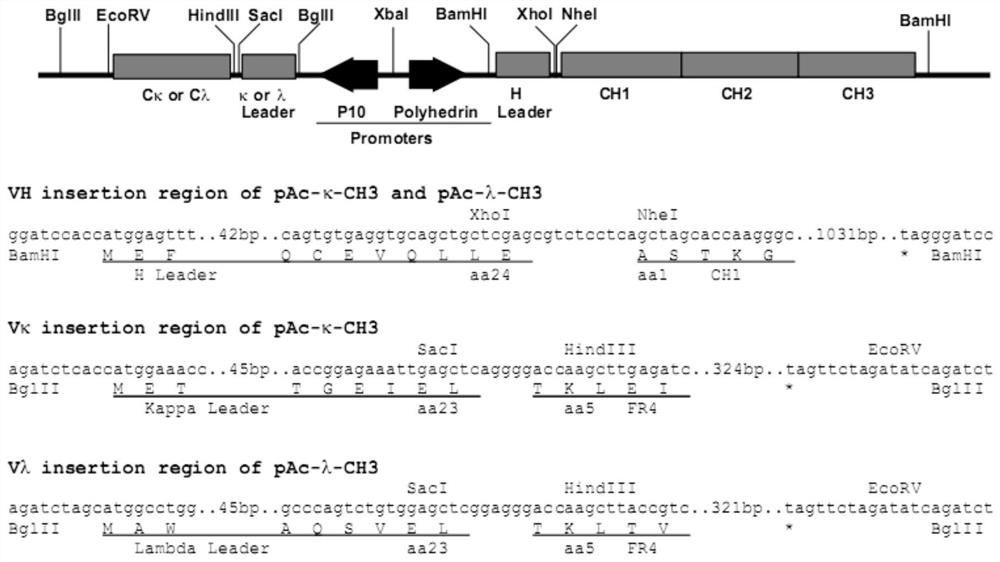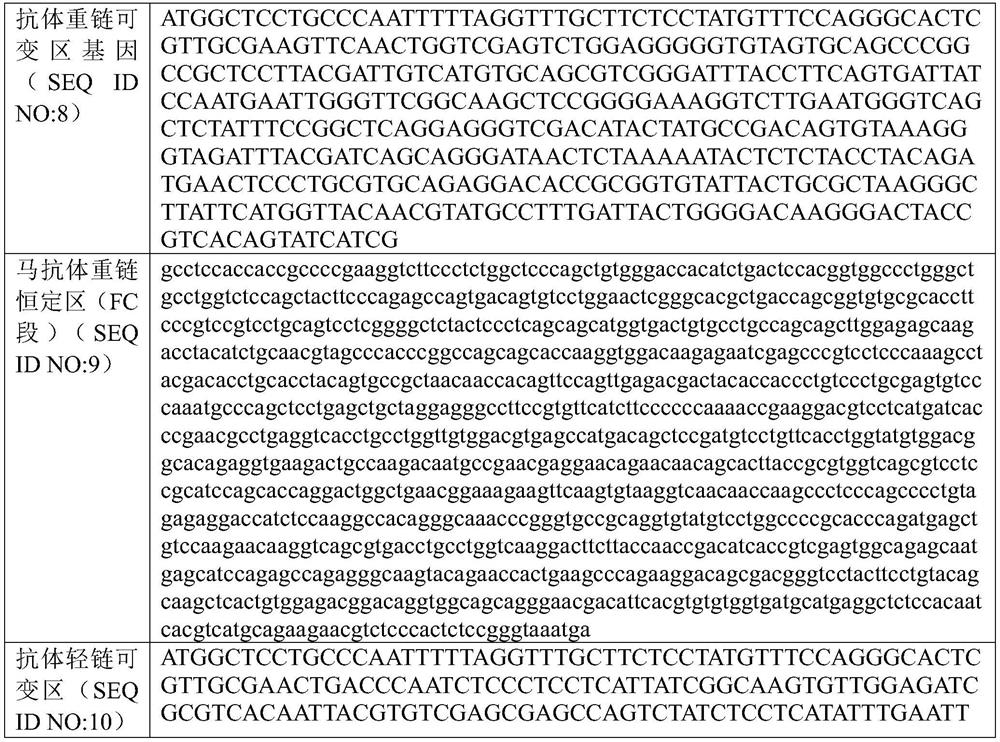Novel coronavirus detection kit
A detection kit, coronavirus technology, applied in the direction of measuring devices, instruments, scientific instruments, etc., can solve problems such as long operation time, false negatives, and high technical level requirements for testing personnel
- Summary
- Abstract
- Description
- Claims
- Application Information
AI Technical Summary
Problems solved by technology
Method used
Image
Examples
preparation example Construction
[0040] In a specific example, the preparation method of the novel coronavirus protein-magnetic bead complex includes the following steps: use 3mM~7mM sodium dodecyl sulfate solution to treat the novel coronavirus protein to obtain a denatured antigen, and then use the denatured antigen to coat the magnetic beads. beads. Preferably, the concentration of SDS is 4mM-6mM. Due to the large variety of antigens and the complex conformation, in the preparation process of the protein-magnetic bead complex, by using a certain concentration of SDS to treat the recombinant 2019-nCoV-related antigen, the antigenic epitope is released, which increases the number of antigens that are different from the 2019-nCoV in different samples. The possibility of virus IgG antibody binding improves the sensitivity of detection and further reduces the possibility of false negative or missed detection.
[0041] Aiming at the defects of the nucleic acid detection method and possible omissions in the chem...
Embodiment 1
[0044] 1. Antigen preparation
[0045] According to the gene sequence of the new coronavirus and the composition of its shell, the 293 expression system was used to express and purify the proteins that make up the structural proteins of the new coronavirus (spike protein Spike-S1 subunit, Spike-S2 subunit, nucleocapsid protein, capsid protein, membrane protein) as the coating antigen.
[0046] For example, the expression and purification of S1 protein:
[0047] Select the RBD (receptor binding domain) protein of the new coronavirus spike protein, the amino acid sequence is:
[0048] NITNLCPFGEVFNATRFASVYAWNRKRISNCVADYSVLYNSASFSTFKCYGVSPTKLNDLCFTNVYADSFV IRGDEVRQIAPGQTGKIADYNYKLPDDFTGCVIAWNSNNLDSKVGGNYNYLYRLFRKSNLKPFERDISTEIYQAGSTPCNGVEGFNCYFPLQSYGFQPTFENOVGYQPYLLRVVVVTV(IDNLCPFGYQPYLLRVVVST)
[0049] Signal peptide, the amino acid sequence is: MFVFLVLLPLVSSQCV (SEQ ID NO: 2);
[0050] Transmembrane domain, the amino acid sequence is: ELWLVLVAVGAGLLLLLGLIILLL (SEQ ID NO: 3);...
Embodiment 2
[0085] This example is basically the same as Example 1, except that different concentrations of SDS (2mM, 7mM, 10mM) were used in the preparation process of the antigen-magnetic bead complex.
[0086]
[0087]
[0088] 10 positive specimens were tested using kits obtained under conditions of different concentrations of SDS. As can be seen from the above table, when 2mM SDS was used, the test results of individual samples were negative due to insufficient antigen exposure during processing. When 5mM SDS was used, the treatment effect was the best, and all 10 positive samples could be detected. However, when 7mM and 10mM are used, due to the high concentration used, the protein is completely denatured, and the antigenic site is destroyed, and some positive test results are negative.
PUM
 Login to View More
Login to View More Abstract
Description
Claims
Application Information
 Login to View More
Login to View More - R&D
- Intellectual Property
- Life Sciences
- Materials
- Tech Scout
- Unparalleled Data Quality
- Higher Quality Content
- 60% Fewer Hallucinations
Browse by: Latest US Patents, China's latest patents, Technical Efficacy Thesaurus, Application Domain, Technology Topic, Popular Technical Reports.
© 2025 PatSnap. All rights reserved.Legal|Privacy policy|Modern Slavery Act Transparency Statement|Sitemap|About US| Contact US: help@patsnap.com



